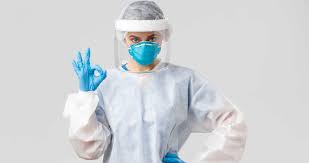Singapore: #36-01/02 Collyer Quay Centre, 16 Collyer Quay (near Raffles MRT)
Malaysia: Pantai Hospital Kuala Lumpur, Suite 8750, 8 Jalan Bukit Pantai, Kuala Lumpur
As a result of the Covid-19 pandemic, many countries around the world have imposed deferment of all non-emergency or routine dental care. Wondering how this is affecting you and your family?
Dental clinics are a unique place. All the check-ups, orthodontic adjustments, cleaning and fillings require a patient to open their mouth for a prolong period of time. This has become an ideal channel for the spread of the COVID-19 virus; especially with dental procedures involving aerosol generation, spreading micro-droplets from the mouth into the air. Hence health authorities in many countries have restricted the practice of dentistry, to only attend to essential services like dental emergencies.
So now, you’re in a situation where you or your child has not been able to see a dentist for a long time to do a regular dental check-up, teeth cleaning, or to fix a long-standing cavity in the mouth... and the problem tooth is starting to hurt. Is this regarded as a dental emergency?
What is a Dental Emergency?
A dental emergency is any pain, infection, broken teeth, fillings, braces, wire poking or retainers causing pain interfering with daily lives are considered as dental emergency.
As for children, they may not be able to accurately verbalize their dental pain, and may be difficult for parents to identify the extent of their discomfort. Here are a few tell-tale signs you can look out for in your child before contacting your kid’s dentist:
- Avoiding hot or cold foods
- Loss of appetite
- Keeps touching his/her face or mouth
- Crying more than usual, at trivial matters
- Disturbed sleep, inability to wake up in the morning
- Constantly putting finger/foreign objects in the mouth
- Not focused on studies or daily activities
- Bad breath that won’t go away despite brushing
- Bleeding gums or blood while brushing
- Ulcers forming in the mouth
If you are suspicious, you may first contact your dentist or your kid’s dentist over the phone, do a virtual consultation or tele-consultation, and share some photos if possible. The kids dentist or
pediatric orthodontist
will be able to advice on your next step of action.
How to prepare your child for a visit to the kid’s dentist?
As the health authorities in your region may have already laid down guidelines to dental clinics to contain the spread of COVID-19 virus, standard set-up such as the use of Personal Protection Equipment (PPE) would usually be recommended.
Children especially are scared of the unknown and they may already have been experiencing anxiety due to the toothache. If brought into a new or changed dental environment, it may potentially create more anxiety, leading to a meltdown, which could hamper with the emergency treatment.
It becomes inherently important then, that you should be prepared and your children are informed and made to understand the following changes prior to your emergency dental visit:
- The dentist and staff may be wearing oversized gowns (PPE’s), masks, head caps, face shields etc. which may look scary at first, however they are still your friendly dentist beneath all those layers. Assure your child that all this is needed for their protection and they should not be alarmed.
- Prepare to come in 10-15 minutes before your appointment. There will be a screening process before you and your child are able to enter the clinic area. Health declaration, temperature checks, contact tracing registration, hand sanitizing with alcohol based sanitizers, barrier outerwear may also be required in some establishments. Face mask wear is mandatory.
- The waiting room may not be the same comforting zone with magazines, video games, toys or a play area that you and your child are used to. Physical barriers such as glass or plastic windows may be installed.
- Older children who can should come into the clinic alone. Younger children or patients with special needs may be accompanied by just one other person. All other accompanying person should wait in their car or outside the clinic to help reduce the number of people in clinic.
- In the treatment area, only one patient will be seen at one time, with a maximum of one accompanying person (and only if absolutely necessary).
- Crowd management and social distancing of at least 1m apart will be practised extensively in the clinic.
- In the treatment room, before the dentist starts any physical examination, a one-minute medicated mouth rinse will be required to help reduce the microbes in the mouth. This will reduce the exposure to dentist and health care workers.
- Dentists and nurses will be in full PPE attire, including wearing of N95 masks, goggles and face shield.
- For aerosol generating dental procedures, very loud high volume suction machines may be fitted in the treatment rooms to reduce aerosol generation.
- Make sure you or your child has brushed their teeth, is well rested and well fed before coming in.
- It is mandatory for clinicians to practice safe time intervals between patients in Singapore: 15 mins (Non aerosol generating procedures), 45 mins (aerosol generating procedures). This would allow proper disinfection and prevent potential cross infection between patients. These processes cannot be rushed. To minimise any disruption and delay in your treatment, ensure you arrive 10-15 minutes to complete your health declaration and screening before your appointment time.
Want to avoid an unnecessary trip to the dentist? Start by looking after your child’s teeth at home!
Working from home and online or home-based learning has increased the time both parents and children spend at home.
If you too are baking muffins and cakes to pass time and manage social isolation blues, chances are there is a shift in your diet towards more sugar rich and processed food along with snacking in between meals. Sleeping late, irregular meal times and a general lack of routine may result in less time and care for oral hygiene. But with dental clinics open only for emergencies, there is a greater need to avoid one.
This can be achieved by taking extra care of your and your child’s teeth at home. Make sure you and your family are:
- Eating healthy and well
- Control sugar and carbohydrate intakes and reduce snacking between main meals.
- Flossing and Brushing with fluoride toothpaste at least twice daily, most important brush is at night before sleep
- Rinsing after meals, especially after intake of sugar rich food and drinks.
What if my child or one of our close family members is unwell? Can my child or I still attend the Emergency Dental Appointment?
If you or anyone in your family is not feeling well with any COVID-19 virus type of symptoms (fever, dry cough, tiredness etc.):
- See a medical doctor immediately.
- To help support the safety of everyone around at the dental office, call the clinic and reschedule your child’s appointment to at least 2-3 weeks later.
- Try to do self-quarantine or self-isolation to minimise the spread of the infection, even if it’s a not a COVID-19 virus infection.
- If your child is in pain, a virtual consultation or tele-consultation with the dentist can be arranged to assess the situation. The dentist will be able to recommend the next course of action accordingly.
If you or your family have access to COVID-19 vaccine, get vaccinated as soon as possible.
At Dr. Catherine Lee Orthodontics, we have a dedicated team of doctors and staff whose skills and experiences help our patients enjoy the process of creating healthier, beautiful smiles. We have a strong focus on growing children, and especially welcome those who need orthodontics and dentistry for kids. For a consultation, contact us at
enquiries@DrCatherineLeeOrthodontics.com.


Intercept Healthcare Pte Ltd. All Rights Reserved. Website Designed by Heroes Of Digital.






